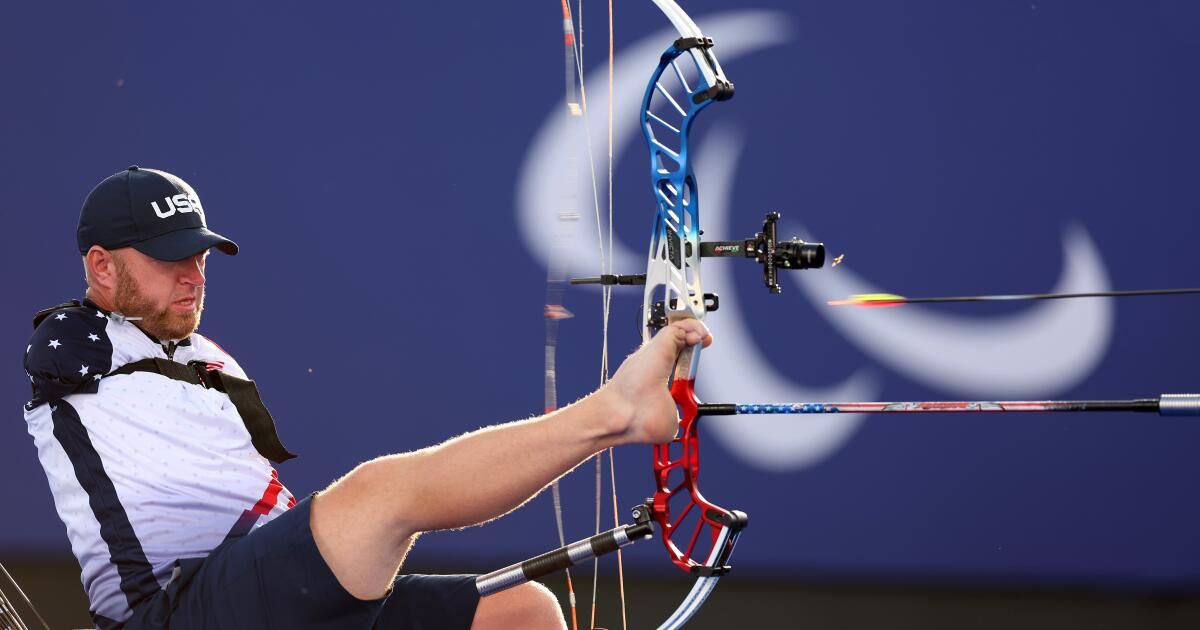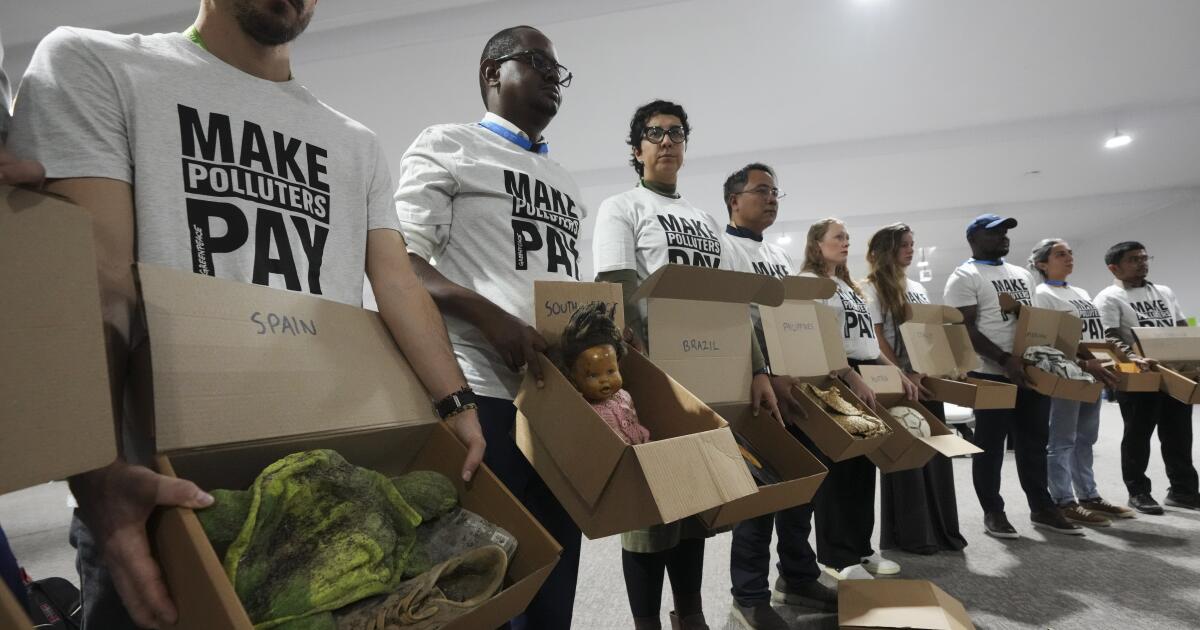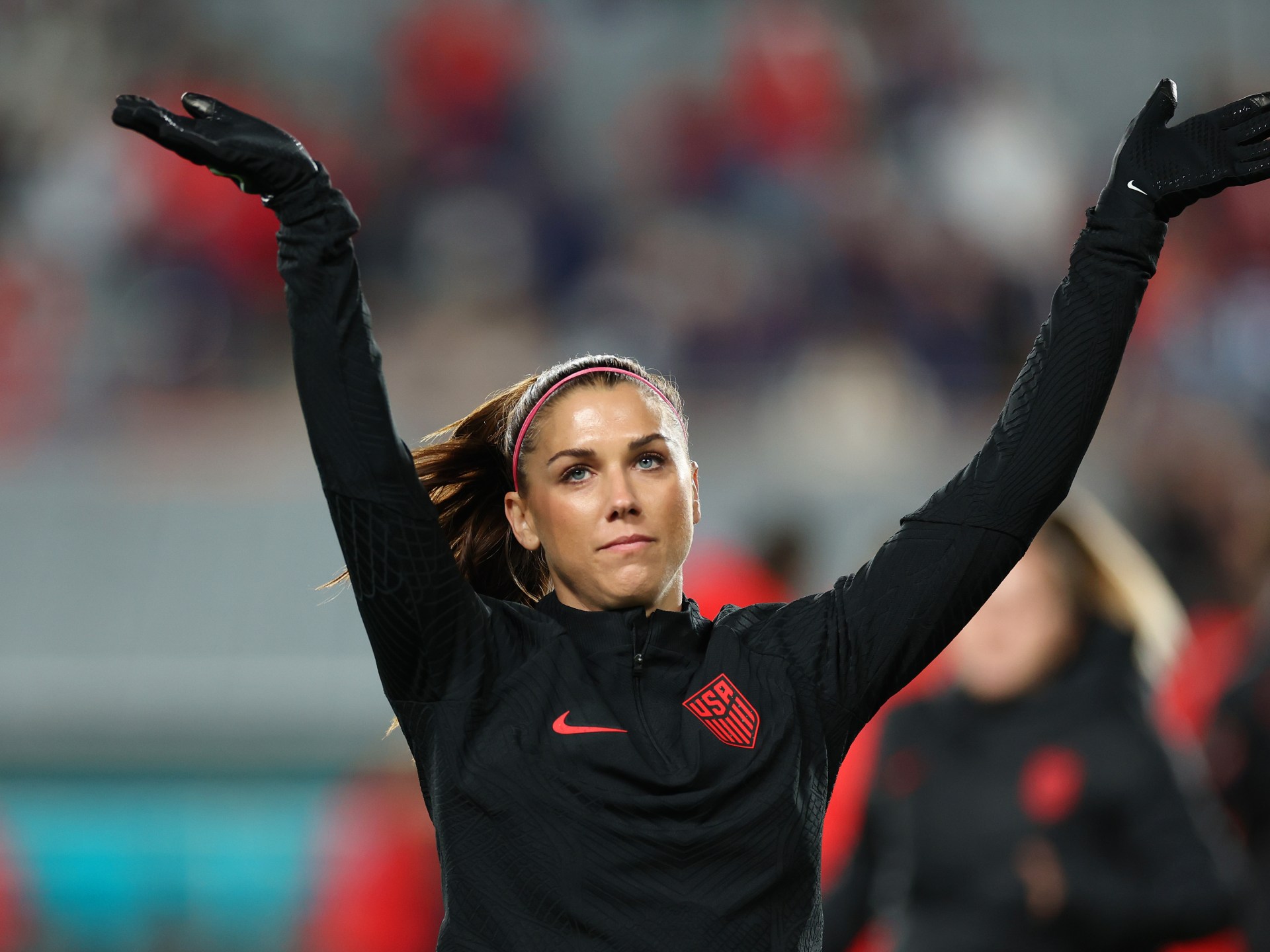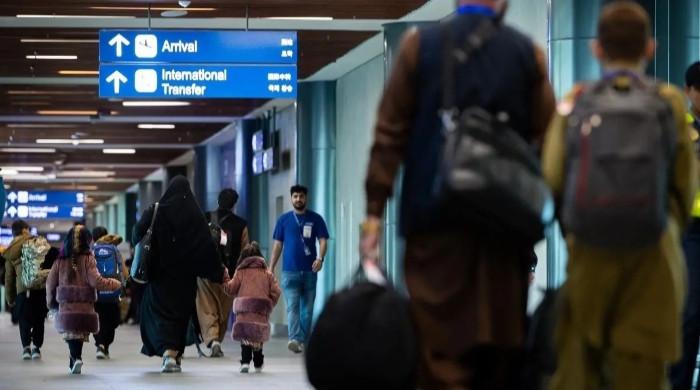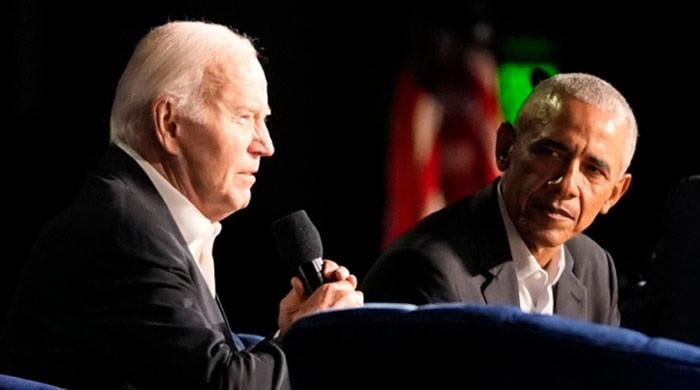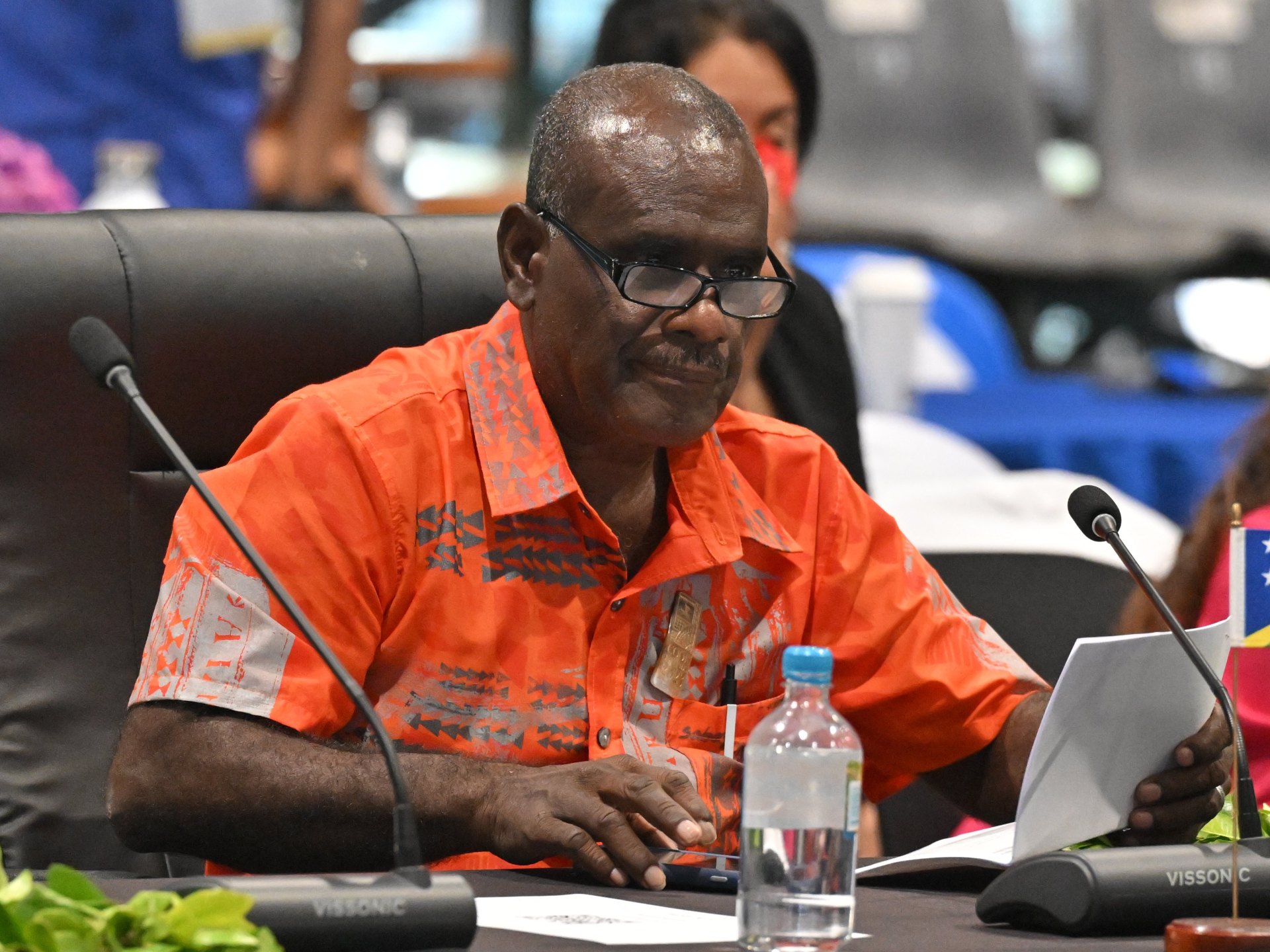No one would hire him. No store or business in his small Iowa town would risk hiring a young man born without arms.
“My wife was the one doing all the work and I felt like I wasn’t doing my part,” he recalls. “I felt bad.”
Matt Stutzman bought a bow and some arrows. To him, this made sense, if only because he had grown up on a farm, accompanying his father and brothers on hunting trips. It seemed like a way to put food on the table.
“I had no idea how I was going to shoot,” he says. “I Googled ‘How to teach a man with no arms to shoot a bow’ and came up empty.”
Matt Stutzman greets fans at the 2016 Paralympic Games in Rio de Janeiro, where he finished ninth.
(Silvia Izquierdo/Associated Press)
Fueled by equal parts optimism and determination, Stutzman embarked on a quest that would make him a legend in the sport of adaptive archery. His innovative shooting technique, using only his feet, resulted in high rankings and a host of medals at tournaments around the world.
Last week, the 41-year-old arrived in Paris for what he announced would be his final Paralympic Games. He called them “a Games of memories… to make memories and just have fun.”
As competition began on the manicured grounds of the Esplanade des Invalides, this relaxed attitude worked to his advantage. Feeling relaxed and well, Stutzman began to wonder: could he end his legendary career with something no armless archer had ever achieved: Paralympic gold?
For those who have never seen Stutzman with a compound bow, never seen him hit a bullseye dead center from a Paralympic distance of 164 feet, here's a brief explanation.
Heavyset, with a shaved head and a scruffy beard, he sits on a chair with his left foot resting on the ground. He loads the arrow with the toes of his right foot and leans forward to hook the bowstring with a hook attached to his right shoulder.
Now comes the hard part. Gripping the bow with his strong toes, he raises it to chest height and straightens his leg to draw it fully. A subtle movement of his jaw presses the trigger to fire.

Matt Stutzman in action during the men's compound archery preliminary round at the 2024 Paralympic Games.
(Adrian Dennis/Associated Press)
If all this seems astonishing to a layman, it is equally implausible to those who practice the sport, because no one has ever done it before. Adapted archers according to Stutzman's classification usually have disabilities in the lower part of the body or deficiencies in one or both arms.
An International Paralympic Committee executive calls Stutzman “an absolute pioneer.” His Chinese rival He Zihao says: “Matt is not just a Paralympic archer. He is also a legend and the greatest of all time in all of Paralympic sport.”
The archery world was eager to show its appreciation during what amounted to a farewell tour in Paris. People knew that a sore right hip had forced Stutzman to scale back his training program and retirement seemed imminent after he finished the preliminary round in 19th place.
Not everyone could see that it was quietly gaining momentum.
In 1982, doctors could not explain why the boy had been born without arms. However, they said raising him would be expensive, with visits to specialists, physical therapy and home modifications. His biological parents made the difficult decision to abandon him.
The Stutzman family had no such qualms about adopting him into their family of seven other children. It wasn’t that they had a lot of money, but that they simply viewed his disability from a different angle. As Stutzman says, “They were the kind of parents who wanted to fit me into the world rather than the world into me.”
That meant teaching him to eat, comb his hair and brush his teeth with his feet. His mother refused to tie his shoes until he tried to do it on his own at least once or twice.
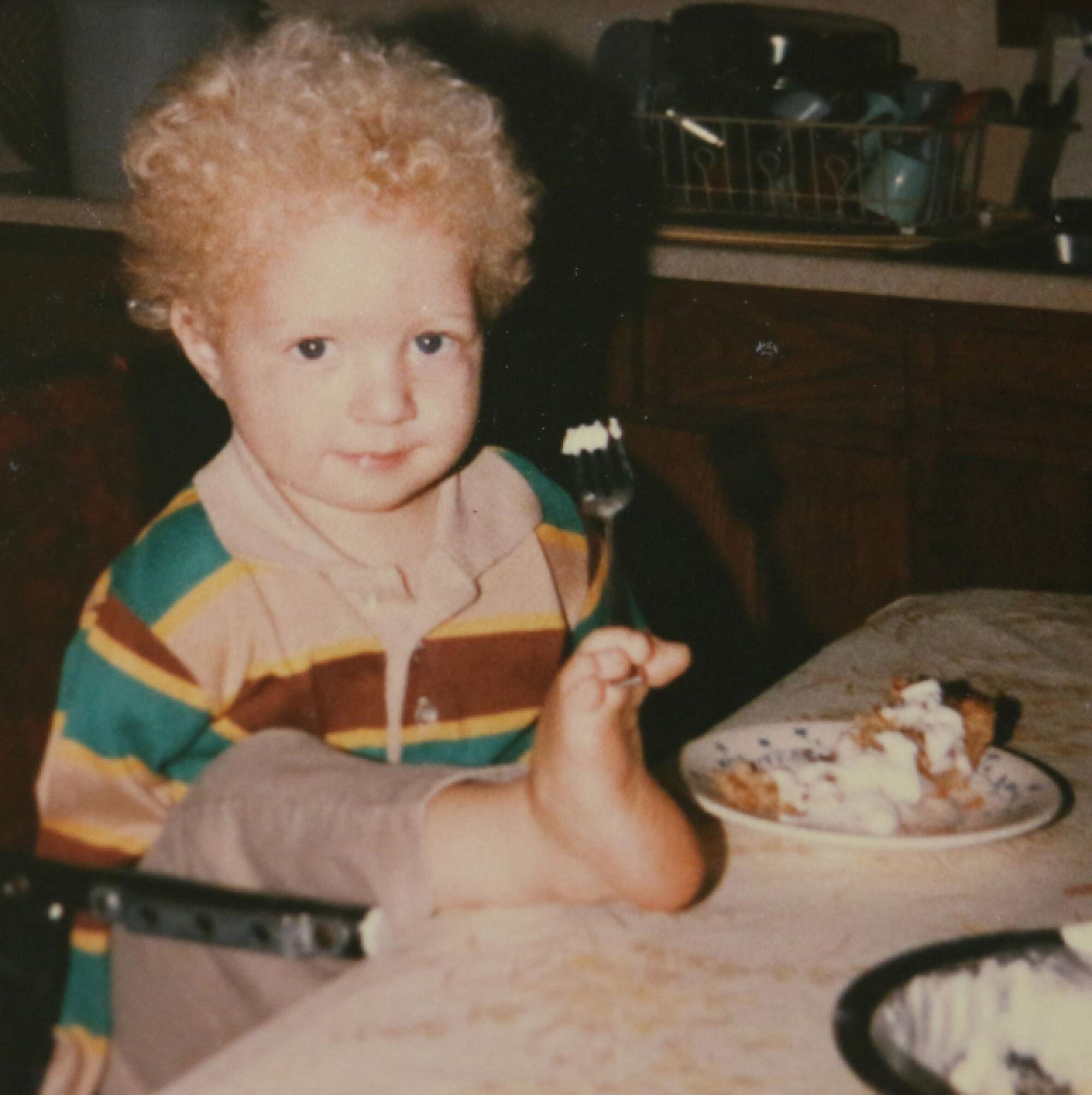
Matt Stutzman was born without arms and learned to eat, comb his hair and brush his teeth with his feet. His mother refused to tie his shoes until he tried to do it on his own at least once or twice.
(Courtesy of the Stutzman family)
Stutzman learned to spread his toes wide and developed a firm grip. When he and his brothers had “apple fights,” he could grab an apple and hit back. By age 8, he was driving a tractor around the farm, using one foot to operate the pedals and the other to steer.
At 16, Stutzman went to the DMV, excited to get his license, but was denied a driving test. Stutzman calls the episode “heartbreaking.”
Over the next two years, he worked on his flexibility and proved to occupational therapists that he could drive and stop as quickly as anyone. When he returned to the DMV at age 18, he demanded a chance.
And when he passed the test, he says, “I made a big donut in the parking lot.”
Despite everything, her cheerful and confident character served as an elixir to overcome moments of despair. A constant smile and a big laugh became her hallmarks.
“He’s always a positive person,” says his fiancée, Jessica Wasson. “No matter where he is, he always tries to make sure everyone feels included and having fun.”
About two months before Paris, Stutzman stopped shooting to give his hip a rest and focused on his mental preparation, which may explain his confidence after the lackluster preliminaries.
“Everything I trained for started to flow,” he says.
In one-on-one elimination matches, competitors shoot three arrows at each of five “ends,” with the center of the target worth 10 points and the outer rings successively less.
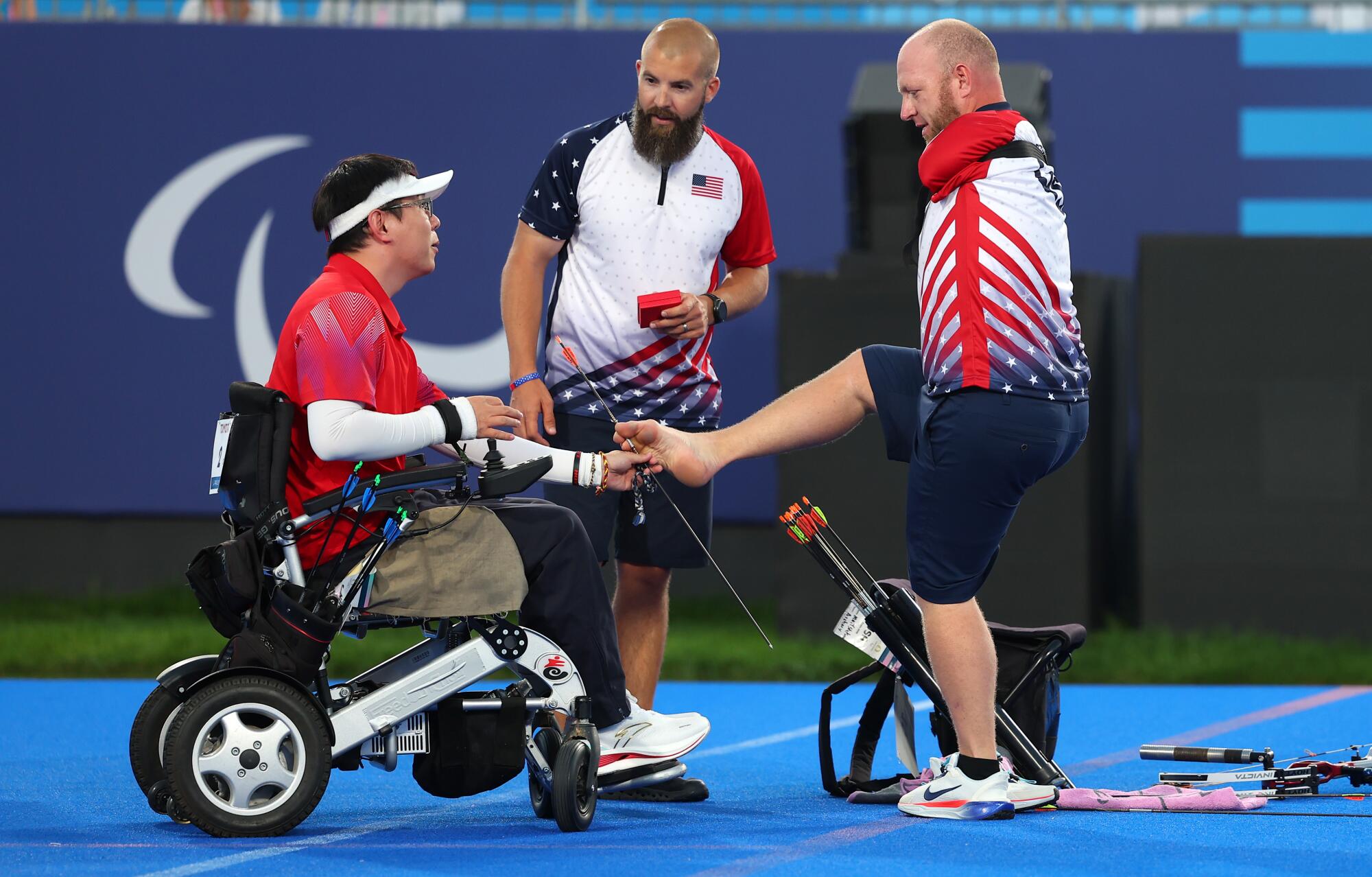
Matt Stutzman hands an arrow to Chinese rival He Zihao at the 2024 Paralympics. Nearly all archers in his category use one or both arms.
(Alex Davidson/Getty Images)
Stutzman began his contest against Mexico's Victor Sardina Viveros, one of many armless archers who followed in his footsteps in the sport and consider him their mentor. Their match marked the first time two such archers faced each other at the Paralympics.
“He is very open and shares his experience with us,” says Sardina Viveros, “so I am very grateful to him.”
After winning 142-136, Stutzman moved on to a tougher challenge against veteran Jere Forsberg of Finland. With the score tied after five ends, each took one more shot.
Both men hit their targets, but Stutzman's arrow was better, almost exactly dead center, bringing him one step closer to the gold medal match.
Learning to shoot took some ingenuity. With no training or online videos, Stutzman had to figure it out in his head.
The hook-and-shoulder harness was his invention, as was the technique that evolved through trial and error. After that first winter in 2009, when he killed two deer and stuffed about 70 kilos of meat into the freezer, a friend invited him to an archery tournament.
“I walked in, took off my shoe to sign the waiver, and asked the lady behind the counter, ‘Where are all the other armless archers?’” she recalls. “I literally thought I was going to compete against other armless people.”
Falling short wasn't fun. Even when a goalie manufacturer called him a few days later and offered him free equipment, Stutzman suspected it was just the no-arms thing. Determined to be more than a novelty, he began practicing eight hours a day.
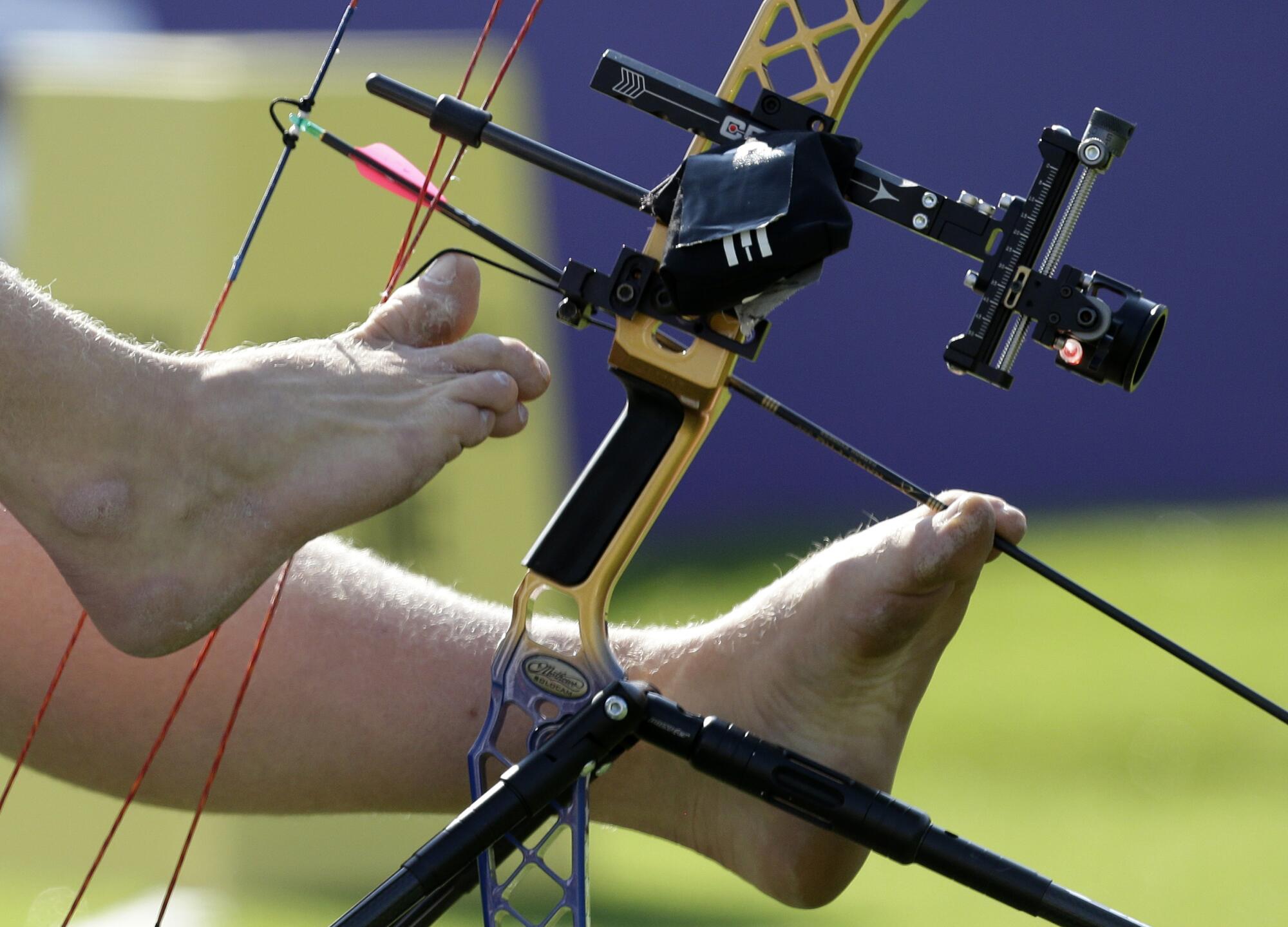
In the early days of his Paralympic career, Matt Stutzman used both feet to load and shoot an arrow. Now he uses only his right foot and keeps his left foot firmly planted on the ground.
(Alastair Grant/Associated Press)
“I would sit in my backyard,” he says. “I would put a target there and pray that I wouldn’t miss because there was a house behind us.”
Hard work quickly translated into regional and national success and increased sponsorship. In 2012 he became the first armless archer to qualify for the Paralympics and burst onto the international scene with a silver medal.
“When I got home,” he says, “the whole town gave me a parade.”
His star was on the rise, bolstered by the wonder of what he could do and, also, by his camera-ready personality. Chinese archer Ai Xinliang describes him as “a ray of sunshine that shines a light on all disabled people.”
Although the next two Paralympics were less successful, Stutzman continued to stand on the podium at major events, with prize money and sponsorships helping him, as a single father, support his three children. Equally important, a sense of mission emerged through letters and calls from other armless people who wanted to try archery.
“I wanted to help that grow,” she says. “It’s the purpose they’re gaining… they feel amazing about themselves.”
The question makes Stutzman throw his head back and laugh.
“Yes,” he replies, “you can now officially Google how to teach a man with no arms to shoot a bow.”
The sadness of retiring after Paris is tempered by the changes he has witnessed over the years. Rookies continue to reach out, about one a month, asking for help. Stutzman is happy to mentor them in the hope that the number of armless competitors will continue to grow in the lead-up to the 2028 Paralympics in Los Angeles.
“Now it’s their turn to shine,” he says of the next generation.
Stutzman gave them a goal at these Games. With Jessica, her family of five children, her parents and two sisters in attendance, she won her semifinal in another sudden-death shootout, advancing to the final against top-ranked Ai.
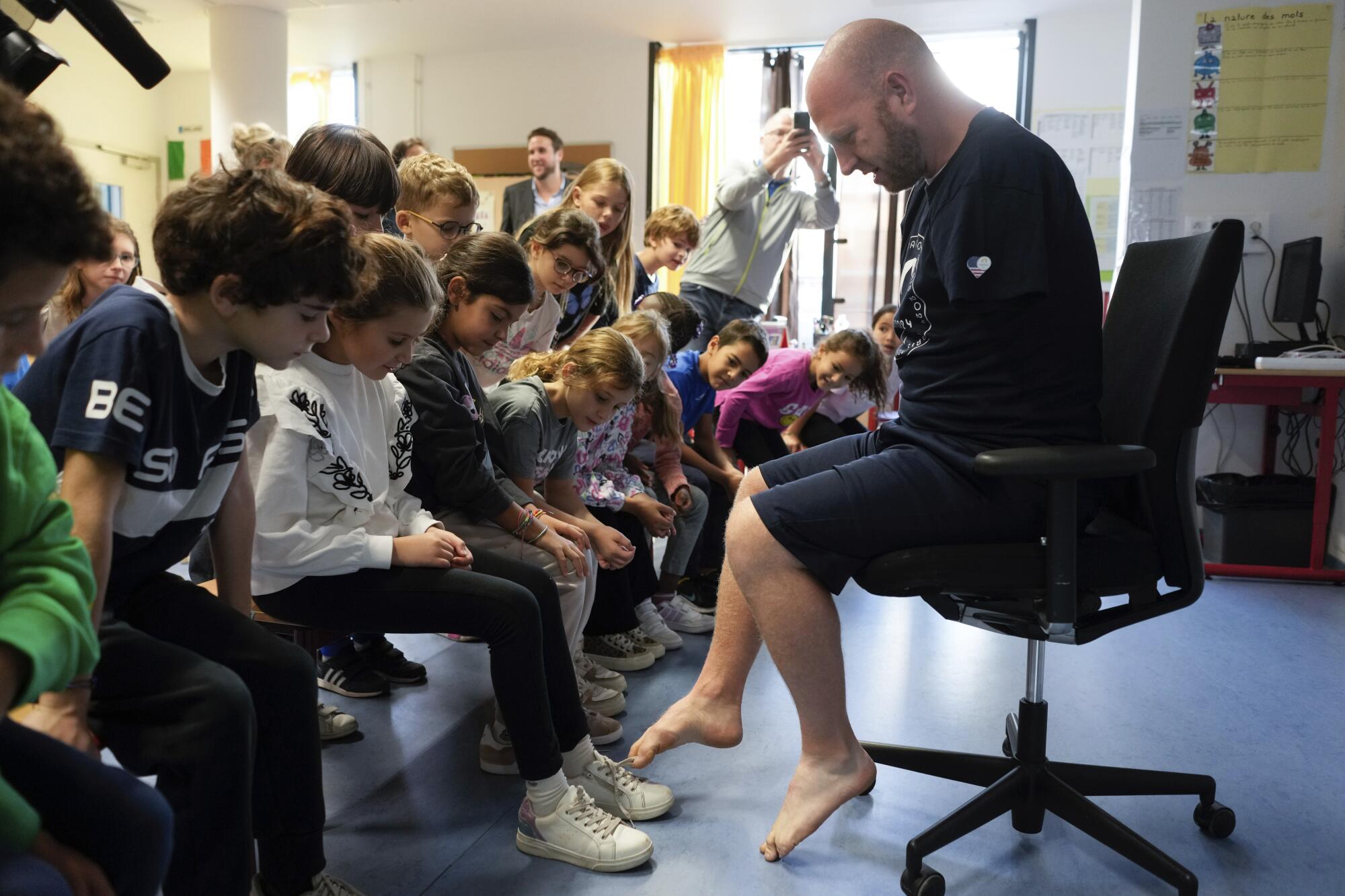
Matt Stutzman visits a Paris school ahead of the start of the 2024 Paralympics, showing how he can shoot an arrow and also tie a student's shoe with his toes.
(Thibault Camus / Associated Press)
The match started with one shot on target after another, setting the tone for a tense duel. Stutzman suffered a less than perfect first shot and fell behind, but gradually regained the lead by one point.
With a gold medal at stake, each man had one last arrow. Ai scored a 10, putting pressure on Stutzman to respond.
The place fell silent as his final shot swung toward the target and hit with a thud. Another 10 shots. The crowd roared and Stutzman leapt from his chair, screaming and kicking.
His unexpected story had a golden ending, as the white gave him victory with a record score of 149 out of 150. That was a point better than any other in Paralympic history, with or without arms.

